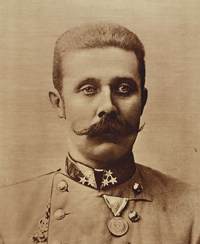
- The Vertigo Years: Change and Culture in the West, 1900-1914
- McClelland and Stewart (2008)
For some reason, we still think that the 20th century began in August 1914, when Europe went to war.
The years between the death of Queen Victoria and the death of Archduke Franz Ferdinand are somehow unimportant. If we think of that decade and a half, it's just clips from early movies: people in silly uniforms, strutting around in black and white at twice normal speed. We look at them ironically. They don't know what's going to happen to them, and we do.
German writer Philipp Blom takes a very different view of our great-grandfathers, and it's a persuasive one. His focus is on Europe, as it should be, but his insights apply to North America as well. He shows us a culture disturbingly like our own.
The world in the first years of the 20th century was grappling with the consequences of 19th-century technology. Telegraphy put Paris in touch with New York and Tokyo. New media -- film, cheap newspapers, radio -- showed urban workers a new world and hinted at a better life built on global trade. They might well reach that life in one of those new, clattering, amazingly swift automobiles, or even an airplane.
But this new technology also threatened the values that Europeans and North Americans had inherited from the middle ages: respect for church, for social order, for racial and male supremacy.
'The bed is the battlefield'
Blom shows us a world with sexual hang-ups much like our own. France and Britain fretted about their declining birthrates and their uppity women. Very unladylike British suffragettes threw bricks and got thrown in jail. Men seemed to have lost their confident grasp on life.
The disease of the 19th century had been tuberculosis. In the early 20th century, something called "neurasthenia" or nervous exhaustion was a new plague, brought on by overwork and the dizzying pace of modern life. It blighted the victim's sex life: "The bed is the real battlefield of the neurasthenic," said one German patient.
Blom gives each year its own chapter, but it's not a simple chronicle. Instead, each chapter focuses on some development of the period: Einstein's and Curie's early work in 1903, for example, and the aborted Russian revolution in 1905. It's an effective way to organize an immense amount of material, and Blom handles it very well. We learn something new even about familiar figures like Picasso and Freud.
From nudism to Nazism
While he carefully avoids foreshadowing the Great War, Blom vividly describes the ideas and movements that would soon crystallize into fascism, Nazism and communism. Fascism emerged from an avant-garde Italian love of powerful new machines. Nazism drew on pre-war racism and even nudism. The young Lenin was part of a generation of "jihadists of the revolution" who saw violence and terrorism as the only means to overthrow Tsarism.
Blom clearly sees the irony of a widespread attitude in the prewar years: The most powerful, advanced and secure countries nonetheless saw themselves as weak. Germany was the leader in technology, but poured its wealth into a money-losing empire and a fleet of battleships to protect it. The British, feeling equally feeble after the failures of the Boer War, joined the arms race.
In 1897 the Polish industrialist Ivan Bloch had foretold unwinnable "industrial" wars that could lead only to revolution. That worried everyone and helped launch the first peace movement, but it did not stave off such wars. The general staff of every great power made plans for short, sharp wars that even the weaker power could win -- if it was faster and more brutal than its opponents.
Same issues, same failed solutions
Argument by analogy is often dubious, and we shouldn't force too many parallels with the powerful but anxious world of a century ago. Still, it seems clear from Blom's book that we deal with very similar issues, as individuals and as societies. The "Thirty Years' War" of 1914-1945 didn't resolve those issues. Nor have the Cold War and the present War on Terrorism.
We might consider the prewar vertigo years as offering examples of what doesn't solve problems. They include militarism, authoritarianism, love of technology, commercialism, imperialism, and simple-minded ideologies based on the last century's pop science. They were all offered as personal and national solutions. They all failed.
Philipp Blom's important book implies that we should look elsewhere for answers, or accept stress and anxiety as simply part of the human condition.




